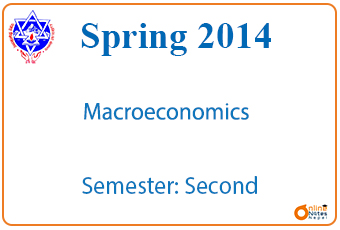Published by: sadikshya
Published date: 24 Jun 2021

This is the question set along with answers of Introductory Macroeconomics Spring 2017, which was taken by Pokhara University.
Introductory Macroeconomics Spring 2017
POKHARA UNIVERSITY
Introductory Macroeconomics Spring 2017
| Level: Bachelor | Semester – Spring | Year : 2017 |
| Program: BBA/BBA-BI/BBA-TT/BCIS/BHCM | Full Marks: 100 | |
| Course: Introductory Macroeconomics | Pass Marks: 45 | |
| Time:3hrs | ||
| Candidates are required to give their answers in their own words as far as practicable. | ||
| The figures in the margin indicate full marks. | ||
Section “A”
Very Short Answer Questions
| Attempt all the questions. | 10×2 | |
| 1 | What is macroeconomics? | 2 |
| 2 | What are the leakages and injections in the circular flow model? | 2 |
| 3 | What is the essence of say’s law of market? | 2 |
| 4 | The value of MPC lies between 0 and 1. Justify. | 2 |
| 5 | State the Keynes’s psychological law of consumption. | 2 |
| 6 | Define the consumption and saving equations. | 2 |
| 7 | Write any four characteristics of depression phase of business cycle. | 2 |
| 8 | Mention the instruments of monetary policy. | 2 |
| 9 | What type of fiscal policy is considered as expansionary fiscal policy? | 2 |
| 10 | Define inflationary gap. | 2 |
Section “B”
Descriptive Answer Questions
| Attempt any six questions | 6×10 | |||||
| 11 | Explain various issues of macroeconomics. | |||||
| 12 | What is NI? Explain the various difficulties to measurement of NI. | |||||
| 13 | Define GDP and calculate NI at market price and factor cost from the following data.
|
|||||
| 14 | Explain the principle of effective demand. Is it possible to raise the employment to the full employment in the Keynesian theory? Justify. | |||||
| 15 | Suppose the behavioral equations for an economy are given as follows:
C= 100+ 0.75Yd , I= 300, T= 50+0.25Y, G= 150 i. Find the equilibrium level of income. ii. Find government expenditure multiplier and determine equilibrium income if government expenditure increased by 50. |
|||||
| 16 | What is demand-pull inflation Explain the causes of demand-pull inflation. | |||||
| 17 | Define fiscal policy. Explain the objectives of fiscal policy in developing countries like Nepal. |
Section “C”
Case Analysis
| Read the situation given below and answer the questions that follow. | |||
| 18 |
|